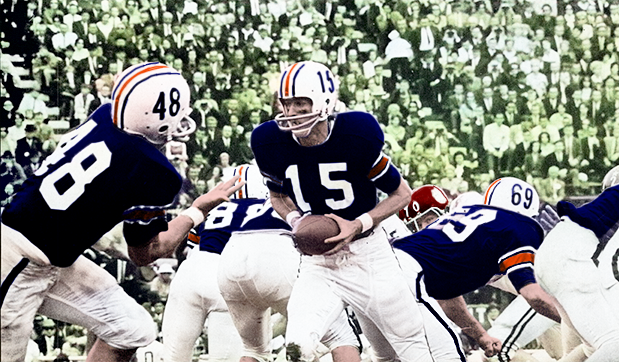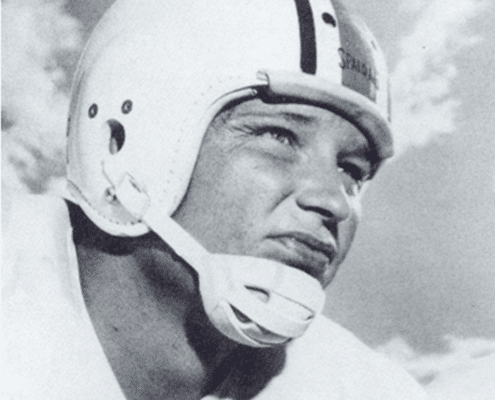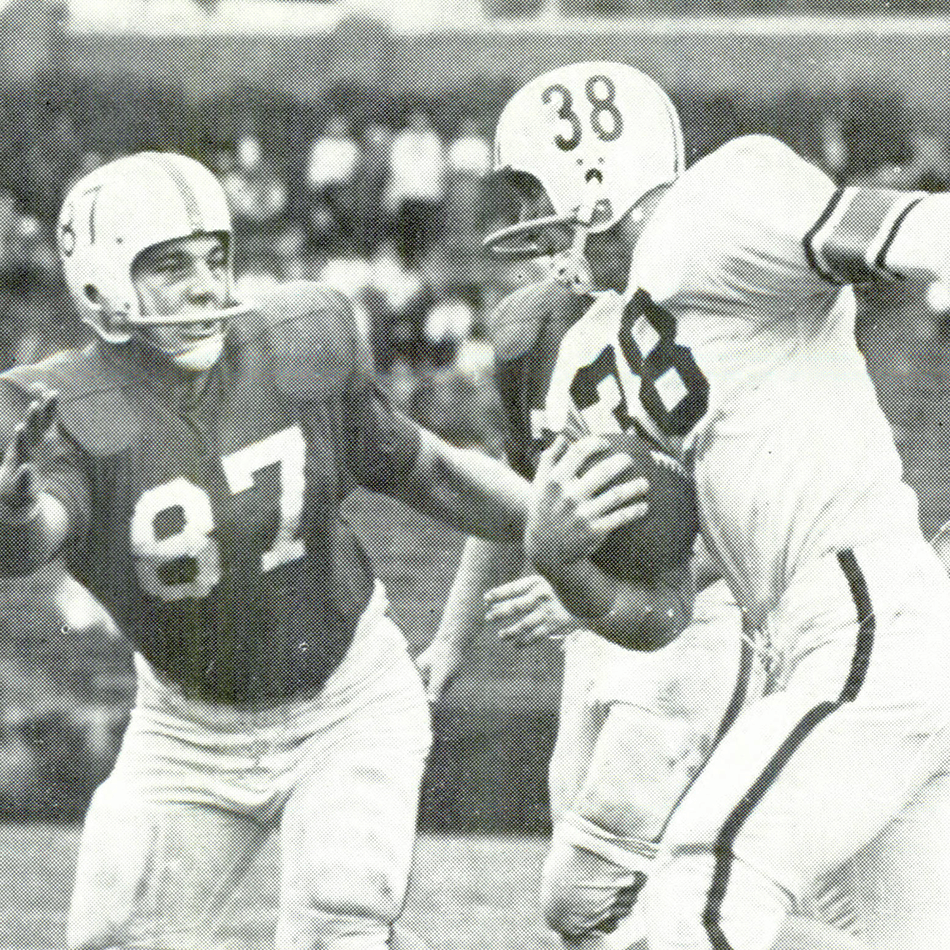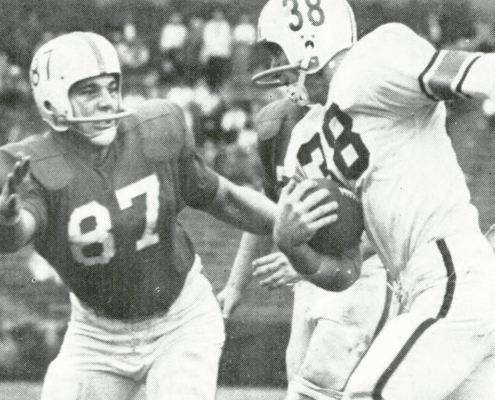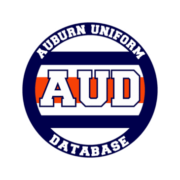When protective headwear began popping up on the football gridiron, they were generally all the same. The brown leather helmets provided very little protection for the players. It wouldn’t be until the mid-1920s that teams began to experiment with helmet colors that weren’t simply different shades of leather.
In the early 1930s, Auburn players wore leather helmets that were dyed navy but with alternating strips of orange leather on the crown. Starting in 1934, the lids were all navy until 1946 when white leather shells were added to the rotation.
Plastic shells replaced leather in 1947 for Auburn. The Tigers would jump between orange, navy, and white helmets for the next few seasons, solidifying on white shells permanently in 1952.
The football team didn’t wear any special design on their helmets for most of the program’s history. The early days consisted of single-colored shells or a single stripe down the middle.
It wasn’t until 1956 that Auburn added the familiar navy-orange-navy Northwestern Stripes to the helmet. They matched the team’s new white jerseys for the season, too.
Auburn would wear the newly striped helmets for two seasons and win a national championship in 1957. In 1958, the Tigers did something new – they added the player’s number to the sides of the helmets.
While many people would immediately connect the helmet number design to Alabama, it was an incredibly common practice during this time. Alabama wasn’t the first to do it, but Auburn might have been the first to do the numbers this way.
Compare images of Auburn’s helmet numbers to other teams of the era and you’ll quickly notice that the Tigers had some giant numerals. Were the numbers just that big or were the old helmets – and that thick set of stripes in the center – playing tricks?
Turns out, they were oversized for a reason. But to know why we need to divert from the uniform talk for just a little bit.
The Auburn-based National Screenprinters, Inc. was founded in 1962 by C.H. “Babe” McGehee, among other prominent Auburn names. McGehee played the end position for the Tigers and scored the first touchdown in what is now known as Jordan-Hare Stadium on November 20, 1939, against the Florida Gators. The game would ultimately end in a 7-7 tie, but history had been made.
McGehee also sported the rare green jerseys during Jack Meagher’s tenure as head coach. He would tell The Plainsman decades later that the players didn’t like the green threads and that “the team objected” to wearing them any longer.

Yes, it’s true – the old helmet numbers worn from 1958 to 1965 were originally used for highway road signs.
McGehee’s company was contracted to supply road signs to the City of Auburn. National Screenprinters utilized state-of-the-art thermal die cutters at the time. A large metal die-cutter was heated up before being dropped on a pile of vinyl. After weeding the excess material off, the final design was nearly ready to be used.
Road signs have long been standardized by color, design, and location. They even utilized a standard font across the country – Highway Gothic. The typeface was listed as the official roadway font as early as 1948.
With National Screenprinters utilizing the Highway Gothic font on numerous projects for the City, they naturally had leftover inventory in the store.
The leftovers were perfect to show Coach Shug Jordan, who had been looking to add something – anything – to the team’s helmets for some time.
Jordan quickly approved and, soon, the entire lot of leftover numerals were repurposed from road signs to football helmets.
The Highway Gothic Condensed numbers were just thin enough to fit on the shells two decals wide. They were large, but they were designed that way.
Most road signs feature white letters and numerals. But some, like the speed limit sign, have black numbers. You won’t find any standardized signs with dark navy numerals.
So that’s what Auburn used – black roadsign numbers on their white football helmets that also featured a set of navy stripes.
The large helmet numbers lasted eight seasons. During that time, the Tigers would play to a 48-23-3 overall record. In 1966, the numbers were replaced with the beloved AU logo.
Enjoy learning about Auburn uniforms and history? Want to see more like this? Be sure to follow the Auburn Uniform Database on Facebook, Instagram, and Twitter for even more uniform news. You can also purchase your favorite team’s merchandise through Fanatics or Dick’s Sporting Goods, with a portion of your sale going to support this website.

